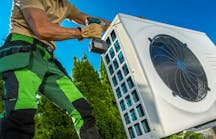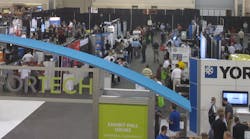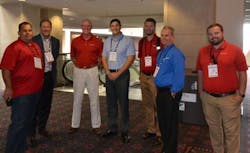Comfortech 2016 sessions focused on the importance of continued soft skill improvement, from how you communicate with your employees, and how they communicate with customers. And how you, as the leader of your team, must raise the banners of training, motivation and leadership.
Comfortech 2016 covered the importance of continued soft skill improvement, from how you communicate with your employees, and how they communicate with customers. And how you, as the leader of your team, must raise the banners of training, motivation and leadership.
However, we were hoping for better enrollment in our training workshops, including electricity for HVAC techs, and characteristics of the newest refrigerants. Any thoughts? What type of training would you most definitely send your employees to (including out-of-state)? Please share your comments below.
It’s a good time to be in HVAC, but you can’t remain passive. As we’ve written here more than once this year, you will or already are facing competition from utilities, big-box stores and even cable TV companies, all seeking to be your connected home expert. That person should be you, the HVAC contracting business owner.
In 2017, Comfortech returns to where it all began, Cleveland. We will have many new innovations, to make the show even more relevant to today’s business realities.And hopefully, the Cleveland Indians will be on the verge of defending a World Series title.
Big Refrigerant Ruling
On the commercial refrigeration front, Sec. 608 of the Environmental Protection Agency’s Refrigerant Management Regulations was modified in October to include hydrofluorocarbons (HFC) refrigerants. This will ultimately eliminate HFCs in HVAC and refrigeration equipment.
Regardless of how you feel about refrigerants and the ozone layer, and its basis in fact (there are conflicting studies out there), the one undeniable fact is that commercial contractors, supermarket managers and refrigeration contractors must accept some new realities.
Some of this is preaching to the choir, but first, you have to be more vigilant with regard to refrigerant leaks. The rule lowers the leak rate thresholds that will require repair in refrigeration and air-conditioning equipment containing 50 or more pounds of refrigerant.
• The new trigger leak rate goes from 35% to 30% for industrial process refrigeration.
• For commercial refrigeration systems, the trigger rate is now 20% (previously 35%).
• For commercial cooling equipment, the new trigger rate is lowered from 15% down to 10%.
• The rule requires quarterly and annual leak inspections or continuous monitoring devices for refrigeration and air-conditioning equipment that have exceeded the threshold leak rate.
• Owners and operators must submit reports to the EPA if systems containing 50 or more pounds of refrigerant leak 125% or more of their full charge in one calendar year.
You can find the entire ruling, and read what it means to store managers, contractors, reclaimers and distributors, by CLICKING HERE.












